Gorp is fine, but what about kimbap? Savor some food inspiration for your next hike
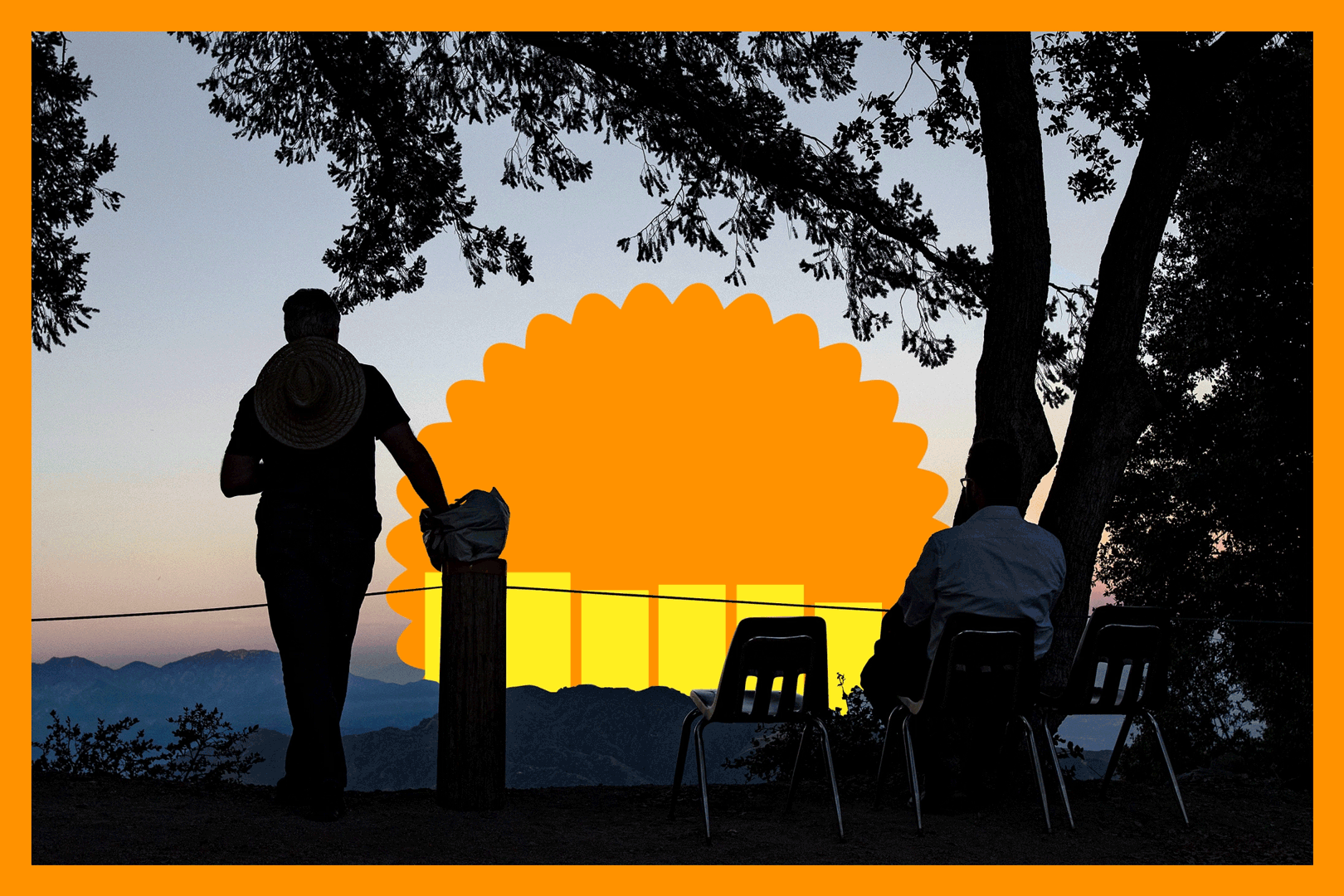
- Share via
There are few things better than arriving at a summit after a long hike and gazing out at a pink, cloud-strewn sunset. At the top, I can finally rest, feeling serene, satisfied and at peace — like I’ve finally figured something out in my life.
That’s usually when the gnawing feeling hits my stomach. Grateful for forethought, I unzip my Hyperlite fanny pack, ready to devour three gleaming seaweed rolls with rice and veggies inside. Rice and veggie-stuffed seaweed rolls might seem an unusual hiking snack, but they’re standard fare for Korean hikers.
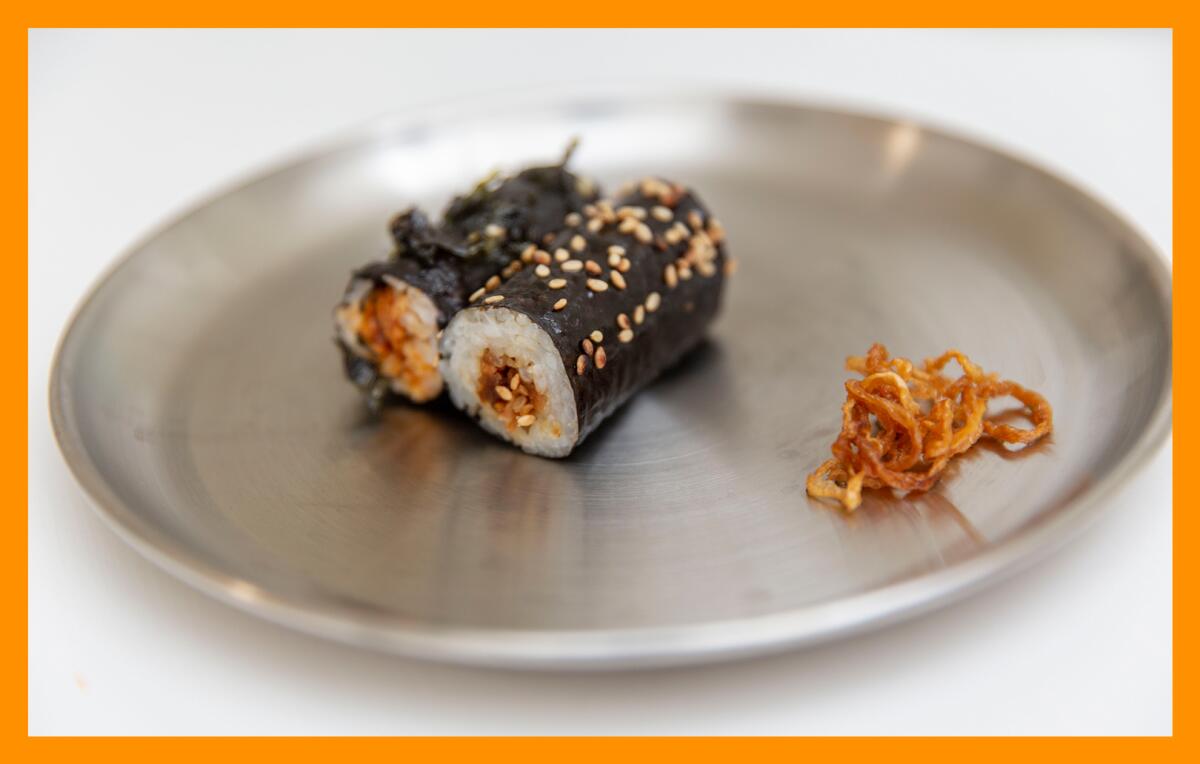
Seventy percent of the Korean peninsula is covered in mountains, so hiking, camping and mountain climbing is a big part of my ancestral culture. I remember watching the Korean church ajummas (married, middle-aged women) spread sticky white rice onto sheets of seaweed, expertly rolling them up before our church members embarked on group hikes. Now, in an unexpected turn of events, I am one of the middle-aged, married moms who makes the kimbap for group hiking trips.
Get The Wild newsletter.
The essential weekly guide to enjoying the outdoors in Southern California. Insider tips on the best of our beaches, trails, parks, deserts, forests and mountains.
You may occasionally receive promotional content from the Los Angeles Times.
Like most South Koreans, my parents love the outdoors, and they were accidentally good hikers, accustomed to trekking miles and miles on foot through the South Korean countryside to attend school and run errands.
My omma (“mom” in Korean) grew up on a farm in North Jeolla Province near the Yellow Sea. Every week she was dispatched with her six brothers to fetch huge jugs of fresh spring water from the top of a mountain. The trip took all morning, and the siblings would bring either kimbap or jumeok-bap (translated as “fist rice,” a triangle of rice wrapped in seaweed) in a dosirak (a Korean lunchbox) to quench their hunger at the top. What a delicious and portable snack to satisfy hungry bellies and power bodies for the hike down the mountain toting cumbersome, heavy jugs of water.
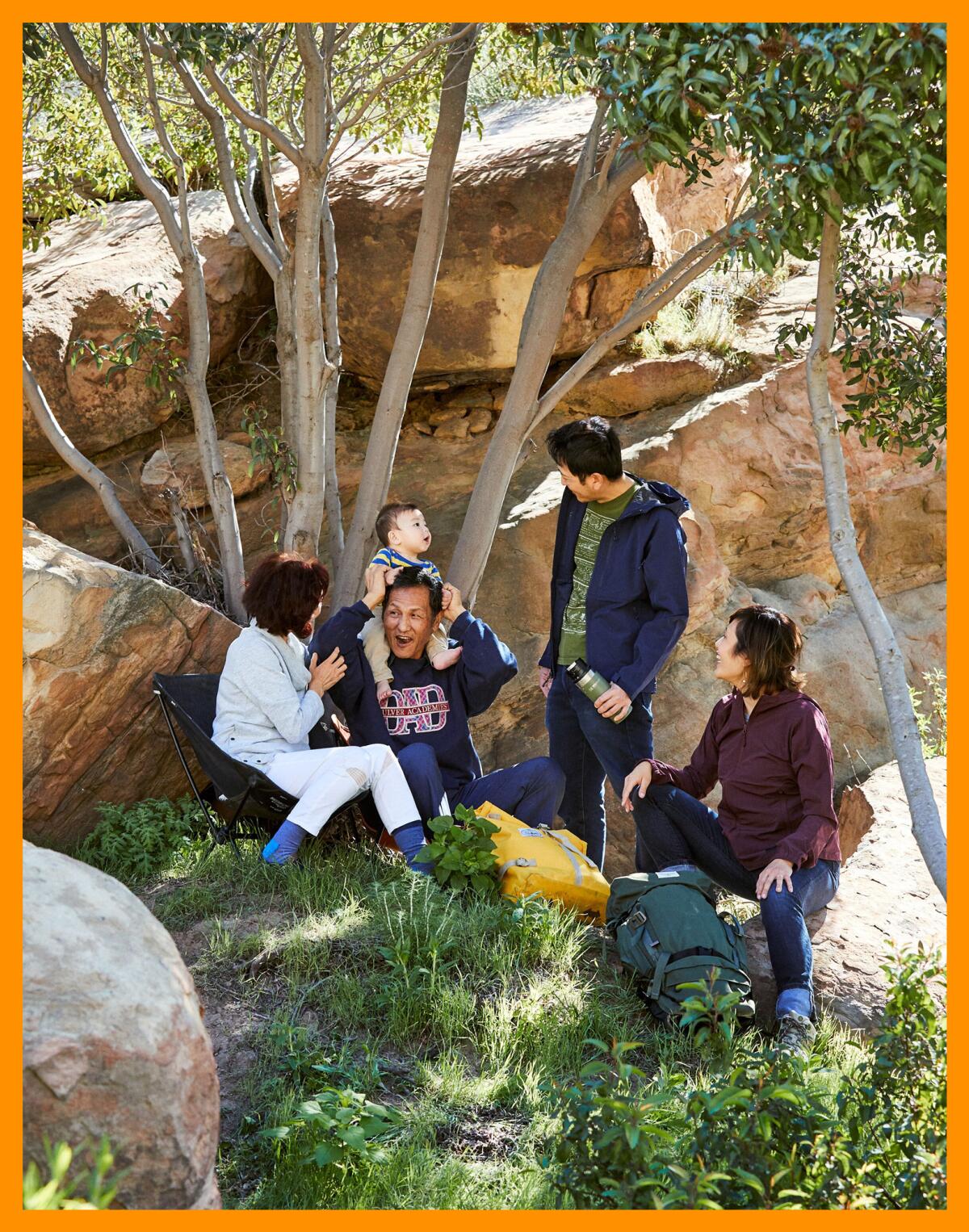
As a pregnant 20-year-old, Omma carried that tradition 8,000 miles with her to Fort Polk, La., where my father was stationed in the U.S. Army. A couple of years later, my parents and brother moved to central Illinois, where I was born and grew up riding my bike through creeks and playing hide-and-seek in cornfields.
In the 1980s and ’90s, my parents took me and my brother hiking and camping for almost all our vacations (in part, I suspect, because we couldn’t afford more luxurious stays in hotels). We’d load the blankets, coolers and tent into our ice-blue Honda Civic hatchback and push the back seats down so my brother and I could sleep on the long drives. Often, we would go to a spot called Turkey Run State Park in Indiana, where campers would stow their lunch boxes and coolers in a cool hollow called the Devil’s Icebox.
All morning, while hiking up and down the area’s unique stepladders, I would daydream about crunching into the fresh, veggie-stuffed kimbap chilling in the Coleman cooler. I’d fret that someone would find these precious treats and, curious as a squirrel, devour them. When we finally climbed back down to the cavern, I’d rush to pop open the cooler lid and make sure the kimbap were still there. I’d unwrap my roll from its Saran Wrap with a sigh of relief. The whole world slowed down as I savored the tangy crunch of danmuji, a bright yellow pickled radish, against soft sticky rice and sesame-scented spinach and sometimes even bulgogi beef.
Around the world, people eat nuts and dried fruit on the trail — gorp is a classic for a reason. But there are also unique traditions in most countries. So much hiking food is weather-dependent, and dried, preserved foods hold up better in hot weather like ours on the West Coast. When I visited Rancho Cacachilas on Baja California Sur last year for a wonderfully hot hike with tour guide Sebastian Del Valle, he shared that ranch-made beef jerky is the snack to have for long days out on the ranch, hiking, herding and riding the ranch mules. When you smash that jerky with a rock and shred it, it becomes machaca, which makes for a delicious machaca burrito.
But if it’s cold where you’re hiking, what’s better than a hot thermos of coffee on the trail? My Swedish-American pal Anna Brones, who wrote an entire book, “Best Served Wild,” about how to eat like an epicurean while hacking your way through the backcountry, loves to stop for fika, or Swedish coffee break. When she hikes or leads bike tours with Swift Adventure Co. in Washington state, she packs not only that hot thermos of coffee but also a cardamom bun or slice of cake. My Japanese-American friend Selena Takigawa Hoy, who currently lives in Machida, Tokyo, brings onigiri and hot mugicha to repower her when she hikes Mt. Takao, Mt. Mitake and Mt. Oyama.
Convenience is key. So is making sure you’re getting enough carbs, fat and protein. Many friends I surveyed put in a vote for a wrapped or sandwich-form carby delight. When living in Sarajevo, Filipinotown-based travel writer Kristin Amico packed a jambon beurre or a cheese burek to hike along the Croatian coast or up to Mount Trebevic; Czech Republic dweller Mariko Amekodommo says that where she lives, hiking snacks are “a baguette-type roll filled with cheese and maybe a leaf of lettuce”; and San Franciscan Anisha Kumra loves the rolled parathas, either plain or stuffed with potatoes, that her Indian-American family preps. Then there’s my childhood friend Cassandre Pinto, who’s Portuguese-French and takes an entire movable feast camping and hiking in the Pyrenees, including “des sardines à l’huile, des sandwichs thon-harissa-salade, du poulet rôti et, dans les Pyrenees, une tourte aux myrtilles” — that’s sardines in oil, tuna-harissa salad sandwiches, roast chicken and blueberry pie.
Forager friend Bat Vardeh, who’s Assyrian, brings conveniently snackable dolmas and chewy, energizing dates on her hikes. In Poland, according to my friends Asha Mashaka-Zienkiewicz and Alicia Jill Sokolowski, whose husbands are both Polish-American, smoked sheep’s milk cheese (oscypek) and meat (kabanos) are sold at all the major trails to hungry hikers. And in Finland, where my friend Eeva Väänänen Moore often heads to visit family, fresh snap peas are a refreshing hiking snack, though she says, “In Finland, people don’t tend to take as much with them as, in the summer, the reason you go into the forest is so you can forage, so you basically just eat wild strawberries and blueberries as you go.” Jealous!
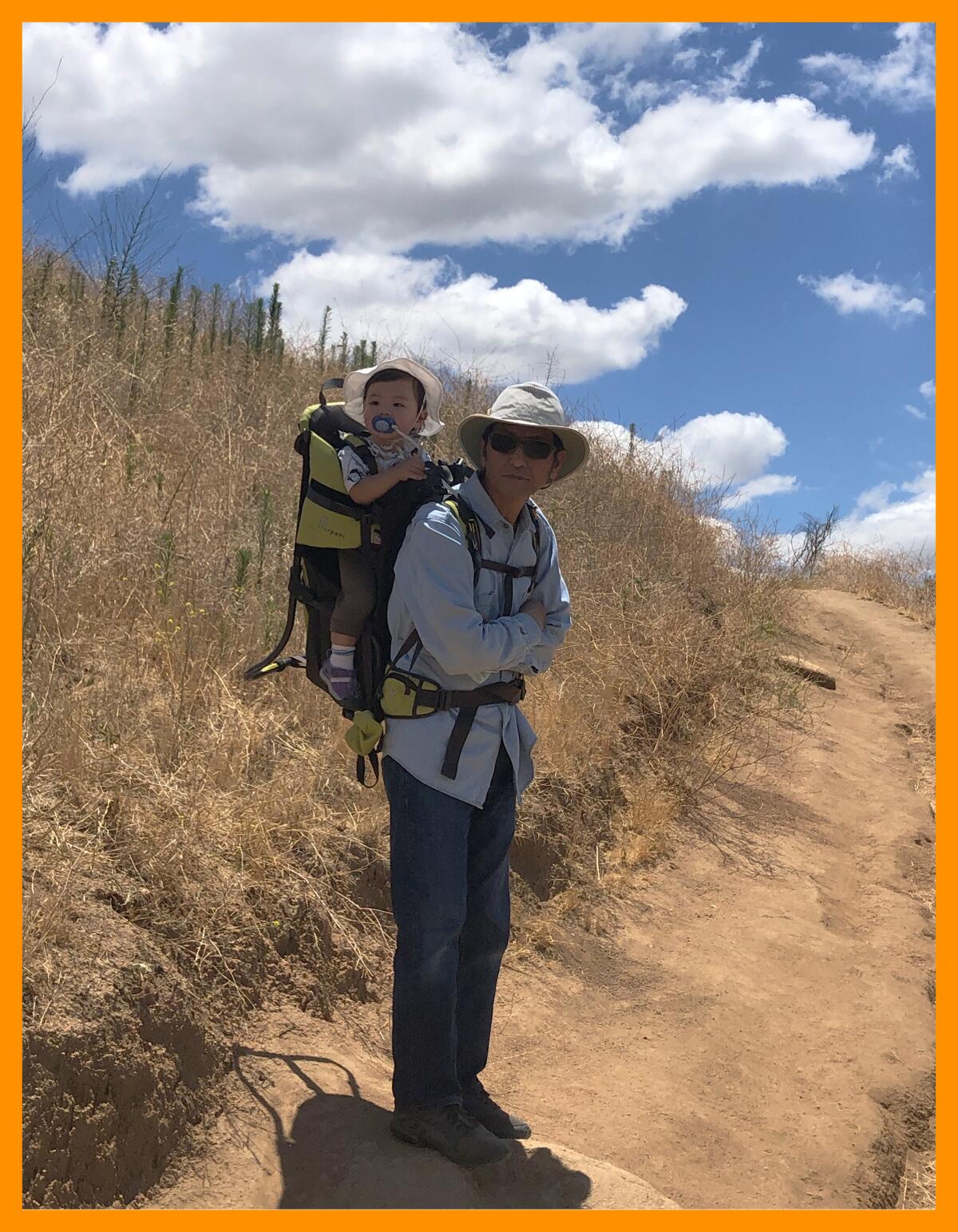
Next time you’re hiking or camping, consider prepping one of these hearty, energizing snacks or meals. Maangchi has a nice kimbap recipe, and there are plenty of tutorials on YouTube for how to properly roll them into a tight roll so nothing falls out while you’re munching on the trail. If you plan to stick with your gorp, my Canadian friend Dan Clapson from Calgary, Alberta, says it’s a Canadian thing to put Smarties in trail mix instead of M&Ms. Whatever you eat, enjoy your hike — and your feast.
3 things to do
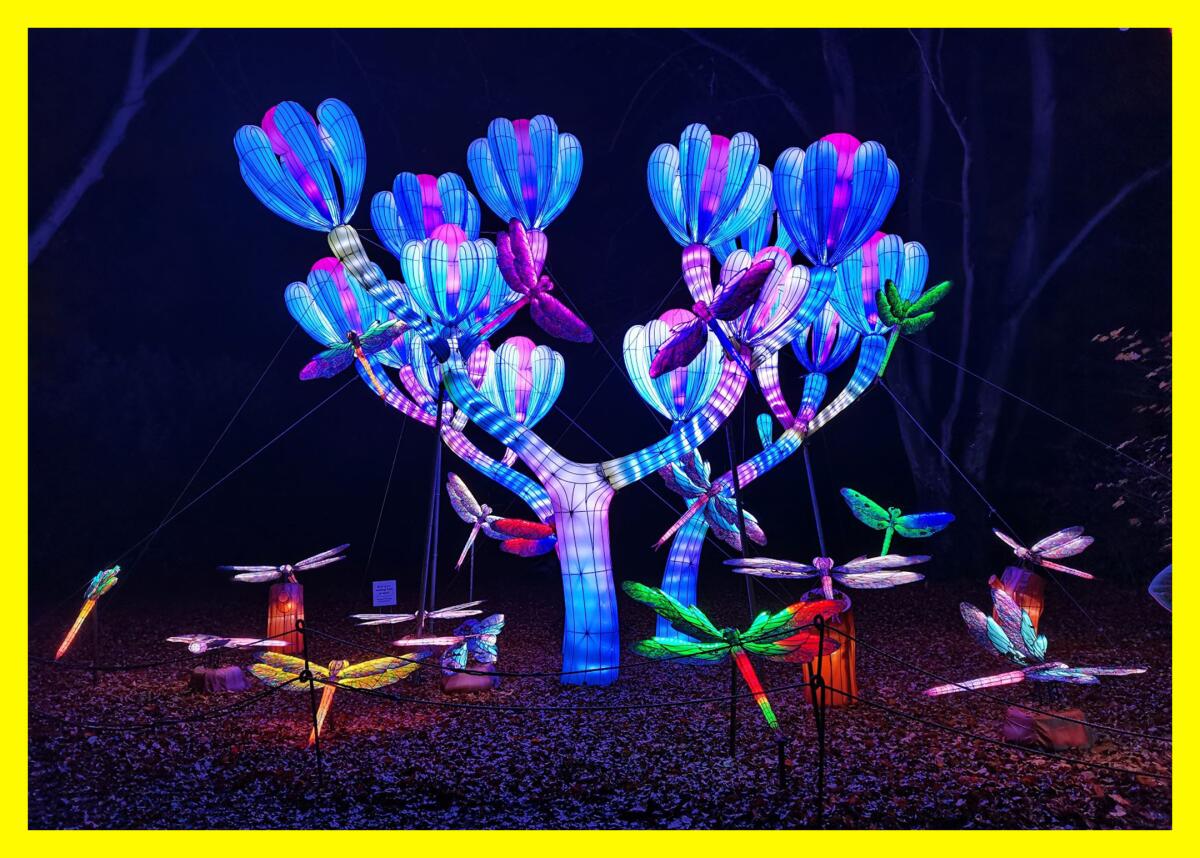
Ring in spring with glowing lanterns. Head out to the Living Desert Zoo and Gardens in Palm Desert for an evening date. At Glow in the Park, you’ll weave through wildlife-themed, glow-in-the-dark lanterns shaped like sharks, giraffes and porcupines. The exhibit this year features new hand-crafted lanterns from the land and sea. Check out this video for a sampler of the event, which runs daily from March 17 through April 30, from 6:30 p.m. to 10 p.m. The cost for adults is $28 to $30; for children 3 to 12, $18 to $20; and for children under 3, it’s free. Buy advance tickets here.
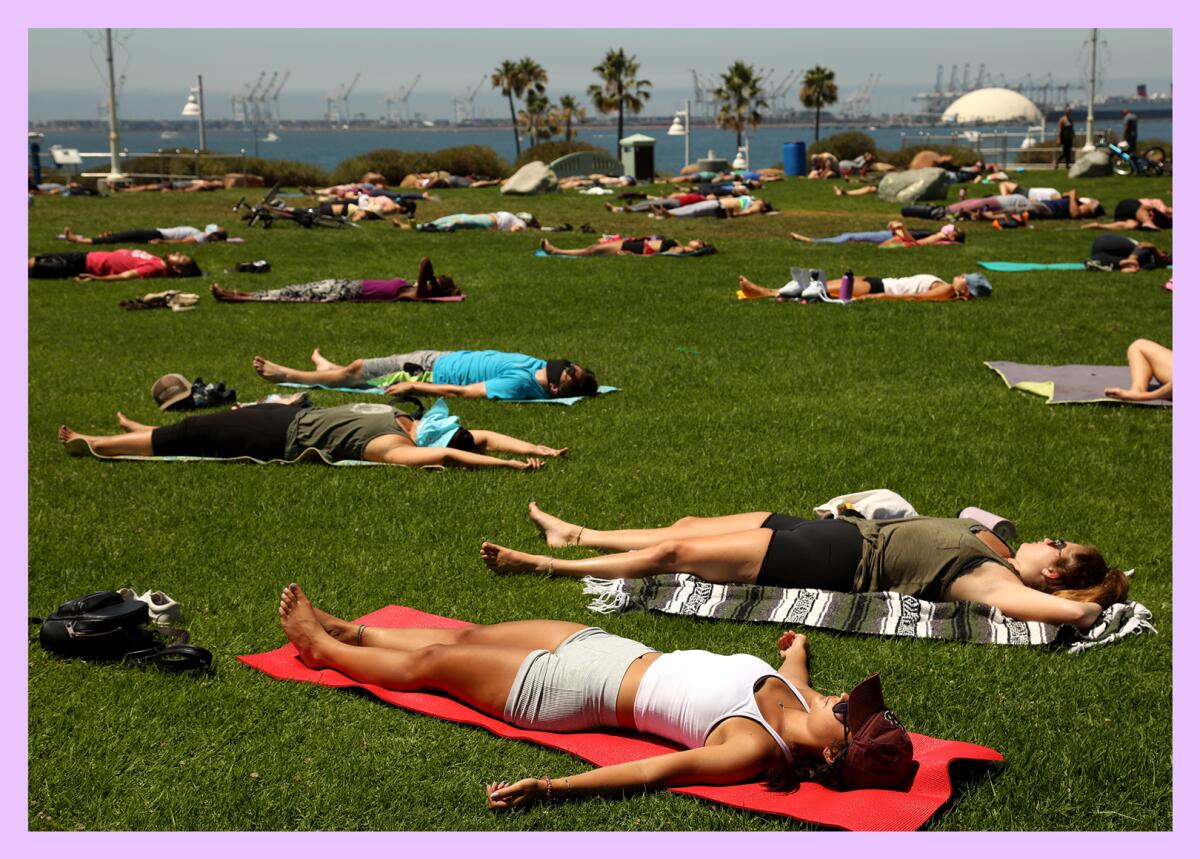
Perfect your crow pose on a mountaintop. Angelenos awaken every morning by doing headstands on the beach by the blue ocean — or so the stereotype goes. Though we have our fair share of yogis teaching on the beach, I prefer yoga in the fresh mountain air, surrounded by trees. If you feel the same way, check out the yoga sessions at King Gillette Ranch. The next one is March 25 from 10 a.m. to 11:15 a.m., and it’s free. Reserve here.
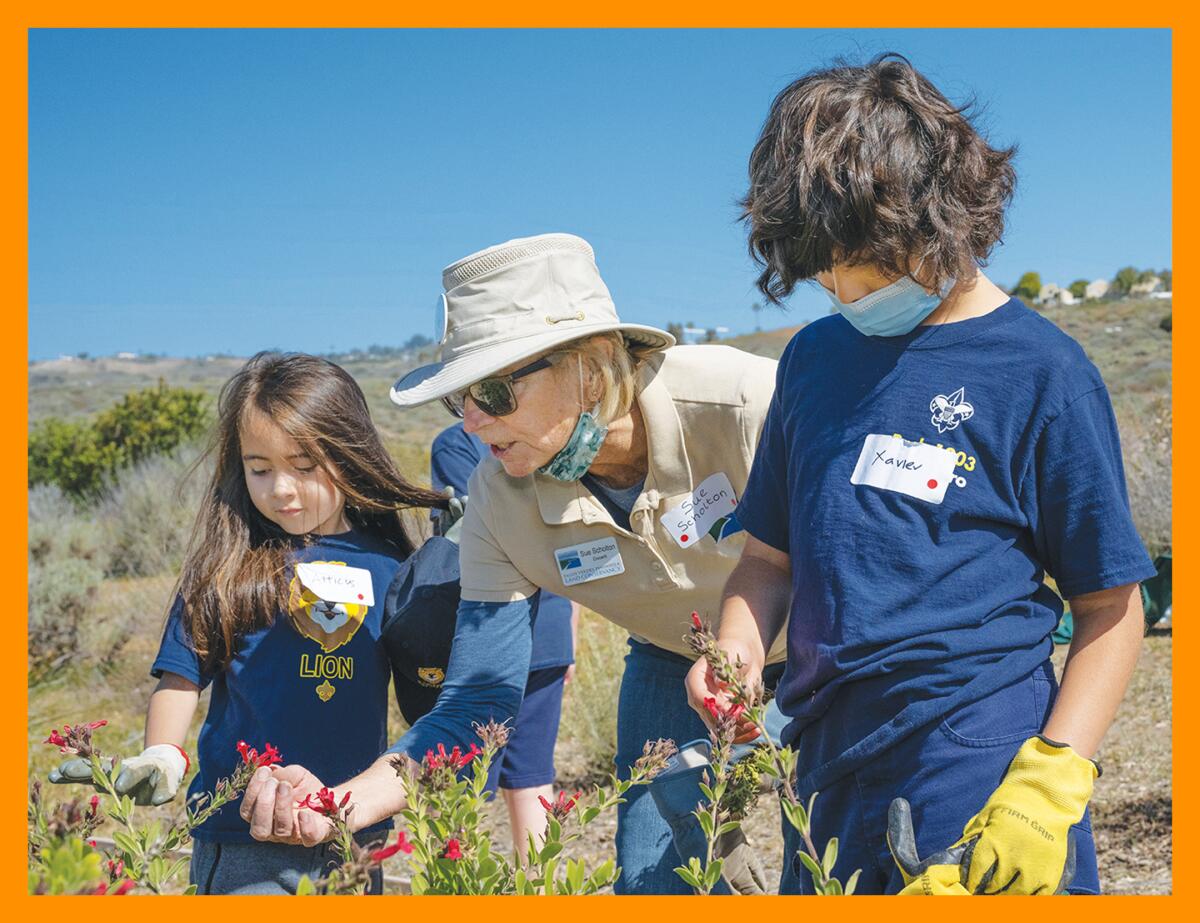
Restore native plants and nab that student credit too. The Palos Verdes Peninsula Land Conservancy is hosting Outdoor Volunteer Day at Abalone Cove Reserve in Palos Verdes on Saturday, March 25, from 9 a.m. to noon. Take in the breathtaking view, snap some selfies with your fellow volunteers and help restore this coastal reserve. You may even catch a glimpse of harbor seals playing in the water or a cottontail rabbit hopping in the brush. If your high school requires community service hours, this is the way to do it outdoors. Check out the calendar to sign up; there are ongoing opportunities.
The must-read
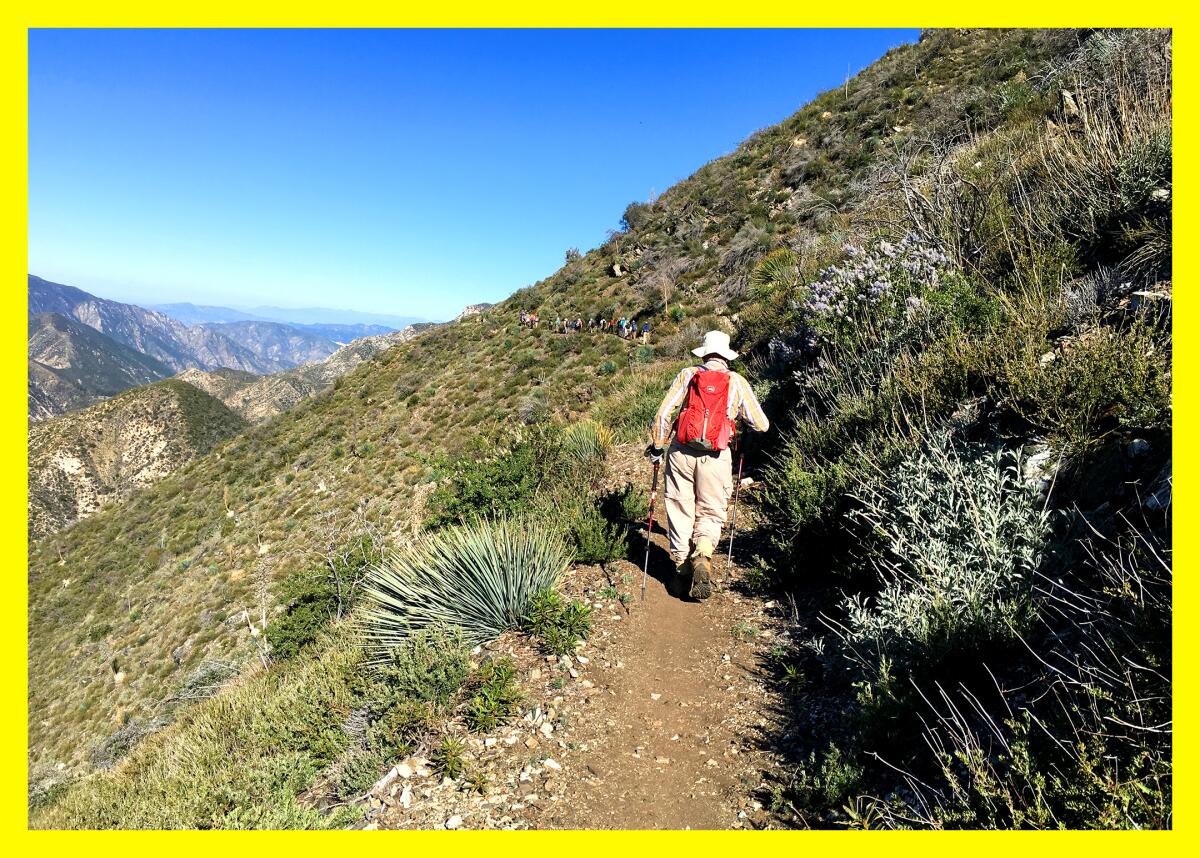
Even the heartiest Angeleno is burrowing into an insulated jacket this winter. But what about hikers, skiers and campers who don’t fit the sizes you usually see at outdoor outfitters? Naomi Tomky writes about this problem in her latest for AFAR, where she notes her struggles to find any size 16 pants and XXL tops when skiing and traveling — much less ones that are cute. “Fat travelers deserve gear that fits, performs, and — to the chagrin of our overwhelmingly fatphobic society — looks good,” she writes, noting that outside of the U.S., it’s even harder to find well-fitting clothing.
While Tomky credits the North Face for making her sizes and Outdoor Research for collaborating with plus-size outdoor influencers to diversify its range, dropping into a store can be an onerous experience for her, and it’s one that shouldn’t be. When researching and buying fanny packs for our hikers’ gift guide, I found the same. Most manufacturers didn’t accommodate beyond a certain waist size or offer the ability to custom-design special fits. I hope retailers hear the clarion call and make inclusive sizes available in-store, so all outdoors lovers can enjoy a convenient and attractive fit anytime, anywhere.
Happy adventuring,

Check out “The Times” podcast for essential news and more.
These days, waking up to current events can be, well, daunting. If you’re seeking a more balanced news diet, “The Times” podcast is for you. Gustavo Arellano, along with a diverse set of reporters from the award-winning L.A. Times newsroom, delivers the most interesting stories from the Los Angeles Times every Monday, Wednesday and Friday. Listen and subscribe wherever you get your podcasts.
P.S.

If you’re as entranced with the myths and stories of the fabled West as I am, drop into the Autry Museum of the American West in Griffith Park, just across from the Los Angeles Zoo. It’s not just wagon wheels, gold rushes and campfire stories. Last year, the museum merged with the Southwest Museum of the American Indian, and it hopes to tell the stories of its new Indigenous collections.
The museum itself is spacious and kid-friendly, with a creativity-sparking family play space and a cafe called the Trail Grill. Many events are family-friendly, like a Western music showcase on Sunday from noon to 2 p.m. The museum also is programming Indigenous events, like the Native Voices Short Play Festival and American Indian Ethnic Studies Seminar. Tonight at the Autry, “Strong Words,” a storytelling event about migration and movement, features literary luminaries like Sandra Tsing Loh and Sholeh Wolpé.
Entrance is $16 for adults, $12 for students and seniors and $8 for children 3 to 12. The museum is open from 10 a.m. to 4 p.m. Tuesday through Friday, and 10 a.m. to 5 p.m. Saturday and Sunday, but every second Tuesday of the month is free (and it’s always free for members, active-duty U.S. military, and kids 2 and under). And of course, when you’re done, dozens of incredible hikes lie waiting for you outside the exit.
For more insider tips on Southern California’s beaches, trails and parks, check out past editions of The Wild. And to view this newsletter in your browser, click here.
Sign up for The Wild
We’ll help you find the best places to hike, bike and run, as well as the perfect silent spots for meditation and yoga.
You may occasionally receive promotional content from the Los Angeles Times.




